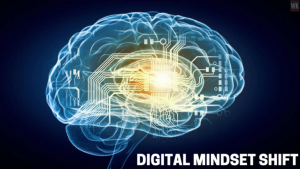Even as I write this article, jobs in industries ranging from entertainment and media to manufacturing and medicine are being transformed by artificial intelligence (AI) and its many iterations. Many people don’t even know they are already in a competition with AI and that several facets of their job are already being accomplished by a digital application or intelligent machine. Workers will not be able to outpace these machines simply by working longer hours or moving faster on the assembly line.
The Science and Art of Every Profession
There is a science and an art to every profession. In school, we learn the science side of our profession. When we graduate, we begin to learn the art side of our profession.
It’s likely that when you see the word “art,” you are used to applying it to business and careers in moviemaking, designing, engineering, marketing and mass media, to name a few. However, there is an art side to everything, encompassing competencies that many refer to as the “soft skills.”
For example, cardiothoracic surgeons spend nearly a decade in college, medical school and beyond absorbing everything they can about the human heart, the human body and how to safely operate on a living person of any age. Every single cardiothoracic surgeon learns those same pieces of information, a veritable how-to process that is heavily regulated and improved upon every year to ensure everyone who earns the qualifications to operate on someone’s heart adheres to a best-practice procedure.
But even amid that educational system of checks and balances, there is an art side to this as well. After graduation, they begin to develop soft skills, such as creative problem-solving and effective collaboration, to name a few. Over time, each and every cardiothoracic surgeon refines their own unique approach to the process, whether it is how they hold their tools during surgery, how they solve problems or their bedside manner in keeping a patient confident in their skills. This is similar for every profession.
AI Will Have Science Covered
Increasingly, the science side of our careers will become increasingly autonomous, and at some point, intelligent automated systems will be able to do the science part of our jobs better than us. The good news is that AI will struggle with the art side: the 12 competencies I’m sharing in this article. For humans to thrive in the future, we need to get much better at doing what humans do best.
12 Competencies for Future Success and Advantage
One major way to learn how to grow your abilities in leveraging the “soft skills” of any career is by understanding my 12 competencies for future success and advantage. While I delve much further into these concepts in my books and teach them in my Anticipatory Leader Learning System, let me give you these competencies now, along with a brief analysis of each:
1. Anticipatory Leadership — Hard Trends provide high levels of certainty and the confidence to make bold moves. Future success and advantage will come from learning to differentiate between the Hard Trends based on Future Facts that will happen and the Soft Trends, which are based on assumptions of what might happen. This competency has transformed how individuals and companies plan and innovate.
that will happen and the Soft Trends, which are based on assumptions of what might happen. This competency has transformed how individuals and companies plan and innovate.
2. Relationship Building – Good relationships are based on trust, and trust is earned through shared human values such as honesty, integrity and delivering on promises. Future success and advantage will come from elevating your ability to increase trust, helping you to build stronger relationships. Without positive relationships, even the most amazing technology can become irrelevant or — worse yet — damaging.
3. Technology Savvy – Humans don’t all need to be technologists; you don’t have to know the physics of smartphones or AI in order to use them. Future success and advantage will come from being willing to learn new things and becoming aware of what the new tools are in a variety of fields in order to creatively apply them to build a better tomorrow.
4. Strategic Listening – Passive listening is when someone follows along with what is being said. Active listening involves paying focused attention to words and phrases that uncover strategic and innovative insights. Future success and advantage will come from increasing your ability to be an active, strategic listener and learning to ask better questions — the type that draws out better answers.
5. Emotional Intelligence and Empathy – The ability to recognize our own emotions and to understand and share the feelings of another in real time (empathy), as well as the ability to discern the different feelings people have and label them appropriately, is a competency that can be learned. Future success and advantage will come from elevating our ability to both identify and use emotional insights to guide constructive behavior to help people better adapt to changing environments. Empathy is also a critical component for drawing audiences into a personal or business story.
6. Cultural Intelligence & Diversity – Different cultures have different ways of thinking and acting, and different ways of communicating that go beyond language, including very different meanings for the same physical and verbal expression. Future success and advantage will come from elevating our awareness and understanding of the differences and embracing them so that we can maximize the innovative and competitive advantage that comes from different ways of viewing a process, product, service, problem or situation.
7. Effective Communication – When you consider the varied ways we communicate — be it verbally, in written form and even in facial expression and body language — it’s easy to see how humans can be far better than AI at accurately and holistically capturing and interpreting the subtlety and varied meanings that communication can carry. Future success and advantage will come from getting better at applying the context and expression of both visual and verbal communication by applying a wide array of multisensory subjective elements that make up good communication. These are the components of communication that humans do best.
8. Effective Collaboration – Cooperation is based on scarcity: You cooperate with a person, a team or a company because you have to, and you only share what you need to in order to protect your part of the economic pie. Collaboration is based on abundance: You collaborate because you want to, and you openly share because the goal is to increase the economic pie for all. Future success and advantage will come from elevating your ability to form collaborative relationships that operate at high levels of trust and the idea that working together builds something better for us all.
9. Adaptability & Agility – You cannot accurately anticipate everything; there will be changes that no one could have seen coming. Future success and advantage will come from improving your ability to adapt to change as well as your agility by learning to react to disruptions and problems as quickly as possible. Adaptability requires someone to be open-minded and nonjudgmental — attitudes that all humans can improve and leverage.
10. Creative Problem-Solving and Tenacity – The creative application of technology unlocks innovation and growth, and innovation at its core is applied creativity. Once a creative solution is identified, tenacity is often needed to see a solution through to a successful application. Future success and advantage will come from improving your ability to identify the real problem, and to creatively apply technology by using creative principles such as The Law of Opposites and Problem Skipping and by learning to identify Hard Trends that will happen and their related opportunities.
11. Service Delivery – A major component of the overall customer experience is the level of service delivery they receive. Future success and advantage will come from elevating your ability to not only fully interpret the subtle nuances in voice and facial expression, but also what the person is thinking and feeling but not saying. In addition, working with a customer over time creates a trusting relationship, and over time a good customer service representative develops an anticipatory sense of what a customer may want or need at a deep emotional level — often before the customer is aware of it.
12. Selling, Persuasion & Influence – Selling, persuading and influencing represent one core competency because they are all focused on one thing: changing a behavior to create a desired result. We are all selling or persuading or influencing someone to do something multiple times a day, often without even knowing it. Future success and advantage will come from elevating your ability to sell, persuade and influence at ever higher levels. When combined with some of the other competencies in this article, humans can outperform machines every time.
After reading through the list, you may have thought to yourself: Some people are naturally better than others at some of these competencies; for example, some are naturally better at sales or naturally more creative. This is true of all 12 competencies. However, I have found that when people start getting better at one, they also get better at the others because they are all connected.
The only way humans can beat the exponential growth of advanced AI-enabled automation in the future and have meaningful, good-paying employment or self-employment is to become increasingly more valuable than machines. Time is growing short — now is the time to be an opportunity manager and start getting better at all of them. If you don’t, you will soon be a crisis manager falling behind exponentially faster.
To discover how to apply these 12 competencies and, better yet, learn how to use future certainties to transform disruption and change into opportunity and advantage, consider signing up for my Anticipatory Leader Membership today!
Originally published here.
Business & Finance Articles on Business 2 Community
(70)
Report Post





